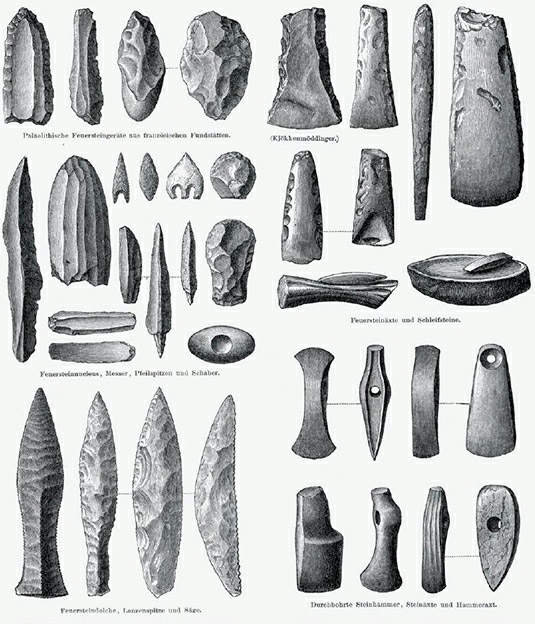The Stone Age marks the earliest and longest period in the technological and societal development of human civilization. Historians and anthropologists estimate its beginning at around 3.4 million years ago, with the discovery of the oldest stone and bone tools in modern-day Ethiopia. Contrary to the typical depiction of cave-dwelling, mammoth-hunting humans, most Stone Age people lived in expansive grassland savannas spanning from southern Africa to northern regions, through the Nile Valley, and into Asia and China. This environment played a significant role in the evolutionary shift of primates from arboreal to terrestrial life.
Life in the savanna was conducive to the development of sophisticated tools made from natural materials like rocks, wood, and bone. These tools, including spears, knives, flints, levers, and mortars, significantly enhanced hunting and food preparation techniques. Cultural anthropologists emphasize the inaccuracy of labeling Stone Age societies as “primitive.” In fact, these societies were adept in their use of technology, mastering not only tool-making but also the use of fire, early watercraft, and the construction of religious and astronomical structures.
Around 6,000 years ago, some human societies began transitioning to the Bronze and Iron Ages, thanks to advancements in metalworking. However, many continued to thrive with Stone Age technologies, some almost until the present day. The Stone Age, therefore, stands as a testament to human ingenuity and adaptability, underscoring the sophisticated use of available resources and the capacity for innovation in early human societies.

